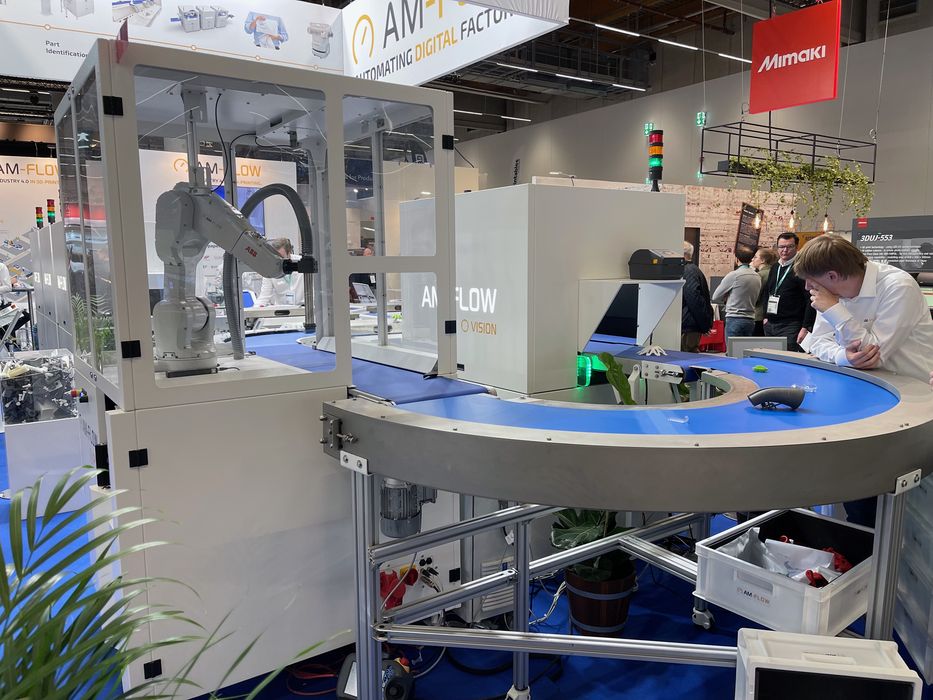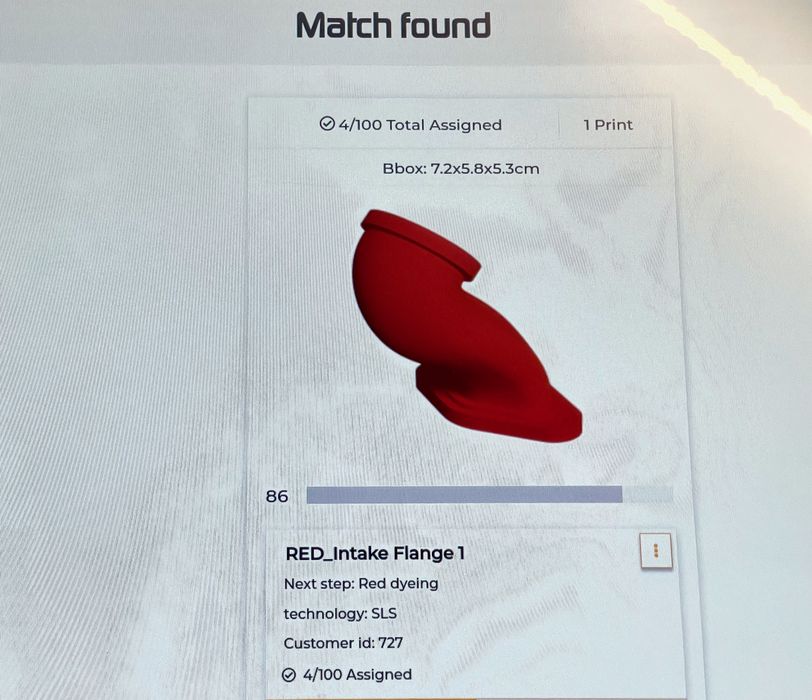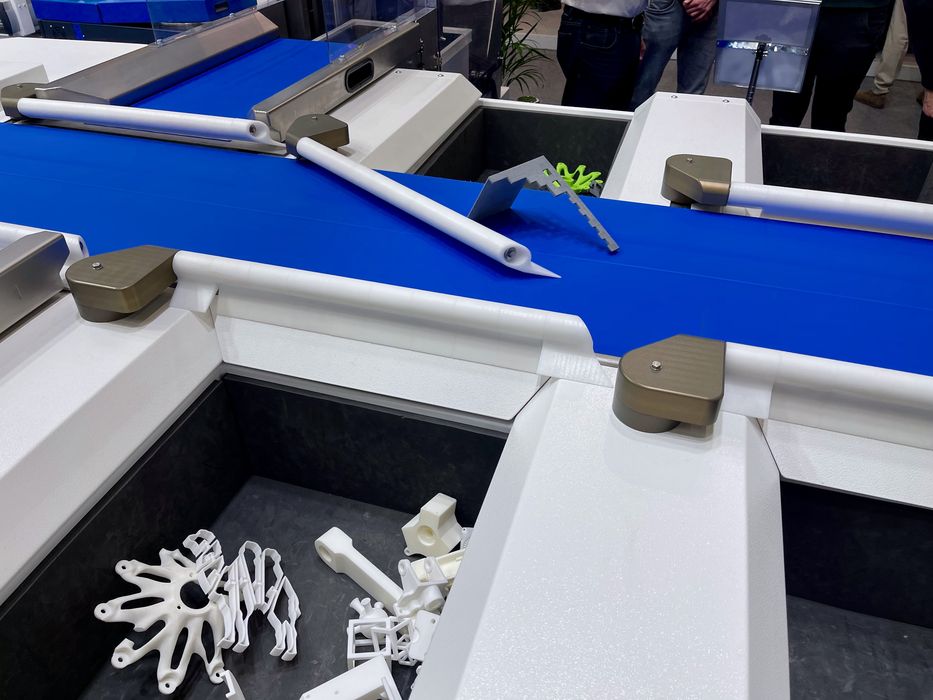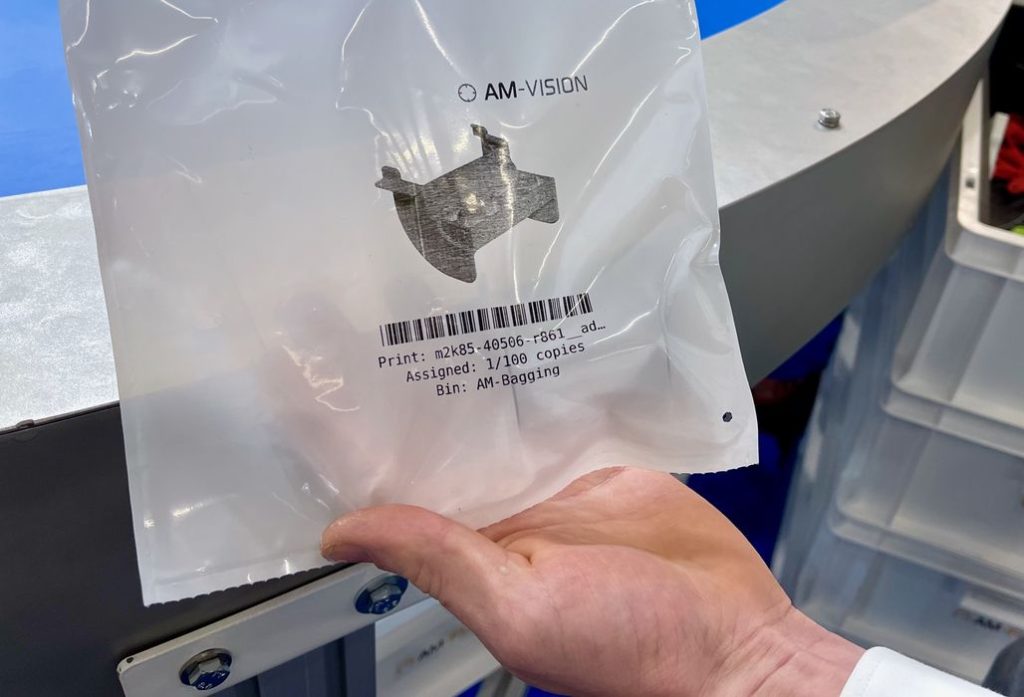
3D printing at scale just might get a lot simpler with AM-Flow’s automation solution.
Almost everyone in the 3D print space is working towards “production”, the making of large, or very large quantities of parts. The reason for doing so is straightforward: that’s where the money is. HP likes to say that’s a US$12T market, and they may be correct. Even a slim portion of that galaxy-sized amount would be tremendous for any company.
3D printer manufacturers have been working on the problem for decades. They’ve provided innovation in multiple ways:
- The ability to print in engineering and production materials
- Increasing print speed, capacity and throughput
- Integrating with post processing systems
- Establishing centralized monitoring and control
But there’s still a problem with digital manufacturing.
What, exactly, do you do with hundreds or even hundreds of thousands of parts swiftly emerging from the system? How do you know which parts belong where? How do you process them differently, as many parts are custom?
If you don’t deal with this, your 3D print factory will simply produce mountains of parts with no where to go. Either that, or you hire armies of expensive humans to handle them manually.
These are big issues. In traditional mass manufacturing, the parts are all identical, so it is straightforward to develop a custom handling system for them. From the machine to packaging, all done.
This is where Netherlands-based AM-Flow comes in. They produce a sophisticated modular solution for handling 3D printed parts.
Their toolkit includes components that:
- Can recognize parts by scanning
- Can recognize parts by reading labels
- Can make decisions about what to do with parts
- Can physically sort parts into different bins
- Can automatically bag parts with labels
- Can gently pick up and move parts
- Can robotically move parts from one location to another
- Can perform real time part quality assessments
As you can now imagine, it would be possible to assemble a very sophisticated post processing automation system for virtually any manufacturing operation. You’d need only figure out the part lifecycle and apply sequences and quantities of the functions above to implement.

I saw some of the components in operation at their Formnext demonstration, and it seems to work quite well. Parts would pass through a scanner and be recognized by comparing the acquired geometry against a CAD library. Then suitable actions would be taken for the part downstream.
The scan can even flip over the part to provide complete geometry sufficient for quality control. In such cases, the part would then be automatically routed to the “not good enough” bin.

Representatives told us the identification step takes only 0.2 seconds, and afterwards the part can be sorted in only 0.5 seconds. If you combine this speed with a supply of fresh parts, you get an understanding of how effective this system could be.

One of the most interesting features is the ability to literally bag parts. Here we see a typical bagged part, with label. This might even be suitable for shipping (with some padding and a shipping label).
It’s possible to use the “picker” to gently grab selected parts and place them in bins for other post processing steps. A common step would be color dyeing. AM-Flow told us their robotic picker system uses a suction cup, but is moving to a “smart gripper”.

One of the most interesting aspects is that all of this activity can be monitored online through their software systems. The operators can then optimize their process to gain the most efficiency.
It’s interesting to note that some of the folks that launched AM-Flow back in 2018 were refugees from Shapeways. When I visited Shapeways’ Brooklyn office some years ago I saw this very problem: there were parts all over the place, with labels on everything. A ton of manual labor was taking place, and that seems to be what AM-Flow is solving.
The time is ready for solutions like AM-Flow. Today manufacturers are discovering they can produce desirable parts using 3D print technology, but are faced with a question: “How do we grow?” Many such operations are stymied by the cost of manual labor to process the produced parts, but that financial barrier could dissolve with a solution from AM-Flow.
Via AM-Flow
